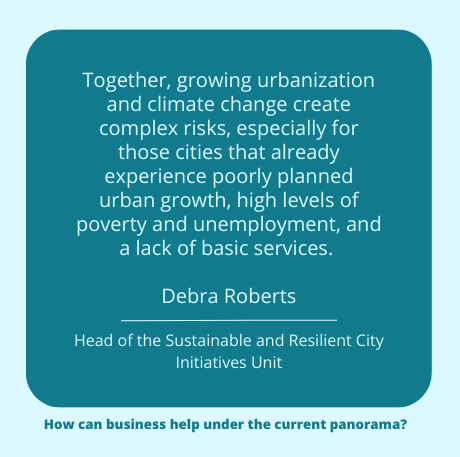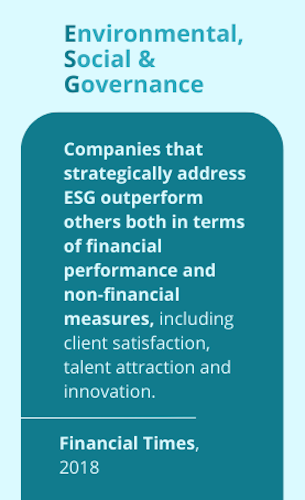Environmental Impact of ERP Systems? What and How to achieve
Environmental Impact of ERP Systems? What and How to achieve

Are you interested in learning about sustainability and ERP systems? Great! Let’s embark on this exciting journey of understanding how organizations can use ERP systems to drive sustainability initiatives and create a positive impact on the world around us.
What is environmental sustainability?
Environmental sustainability refers to the responsible use and preservation of natural resources that will allow the present generations to meet their needs without compromising the ability of future generations to meet their own needs.
Sustainability mainly focuses on keeping the balance and health of the natural environment. This is a long-term compromise that manages both, ecosystems and human society.
Sustainability in the enterprise context

In the enterprise context, sustainability means integrating sustainable practices and principles into the operations, strategies, and decision-making processes of businesses. All of this considering the environmental, social, and economic impacts of business activities.
“Together, growing urbanization and climate change create complex risks, especially for those cities that already experience poorly planned urban growth, high levels of poverty and unemployment, and a lack of basic services,” Debra Roberts* said.
Today, we are facing irreversible changes on Earth’s environment, and businesses are key to address a sustainable change.
The goal of a sustainable business strategy is to make a positive impact economically, socially and environmentally. When companies fail to assume responsibility, the opposite can happen, leading to issues like environmental degradation, inequality, and social injustice.
Successful organizations participate in sustainable business practices. However, there is no clear path of strategies to follow, since they are unique to each organization’s goals and values. For instance, sustainability in business can be accomplished through the following solutions:
- Use sustainable materials in the manufacturing process.
- Optimize the supply chains to reduce greenhouse gas emissions and keep transparency through all the operations.
- Rely on renewable energy sources.
- Sponsore education funds for youth in the local community
- Implement diversity, equality and inclusion business politics.
ESG data unreliable and in need of standards
ESG stands for Environmental, Social, and Governance, and is a set of standards used to assess and evaluate the sustainability and ethical impact of a company or investment.
Organizations are recognizing the value of operating in a more sustainable and socially responsible way. Yet even as they work to meet sustainability commitments, they face increasing pressure from regulators, investors and consumers to verifiably demonstrate progress. Building a sustainable business and ensuring proper management of environmental, social and governance (ESG) indicators has never been more important or challenging.
ESG is not a trend. Companies that strategically address ESG outperform others both in terms of financial performance and non-financial measures, including client satisfaction, talent attraction and innovation (Financial Times, 2018).

Why is SAP leading the way to sustainability?
SAP is a leading global technology company, committed to sustainability. SAP has been taking significant steps to lead the way by working on three core goals: Zero emissions. Zero waste. Zero inequality.
Their main goal is to create positive economic, social, and environmental impact within planetary boundaries on holistic steering and ESG reporting, climate action, circular economy, and social responsibility.

The following are four punctual examples of how the enterprise is working towards a more sustainable future:
- Sustainable Solutions and Innovations: SAP offers a range of software solutions and technologies that enable organizations to manage and optimize their sustainability initiatives. These help businesses track and reduce their environmental footprint, improve resource efficiency, and drive sustainable practices across their operations.
- Carbon Neutrality and Renewable Energy: SAP is committed to becoming carbon-neutral in its own operations. The company is looking forward to reducing its greenhouse gas emissions and actively investing in renewable energy sources. SAP has made significant progress towards its goal and is recognized as a leader in carbon neutrality.
- Supply Chain Sustainability: The company works with suppliers to ensure compliance with environmental and social standards, ethical sourcing practices, and responsible manufacturing. By implementing sustainable procurement processes, SAP aims to create a positive impact beyond its direct operations.
- Employee Engagement and Diversity: SAP values employee engagement and diversity. The company is working towards an inclusive and diverse work environment by promoting employee well-being, and supporting professional development opportunities. SAP actively engages employees in sustainability initiatives, encouraging their active participation and contribution.
How can your SME be environmentally responsible?
As a small and medium-sized enterprise (SME), there are several steps you can take to be environmentally responsible and contribute to sustainability. Here are some key actions to start your own sustainable journey!
- Implement offline and digital sustainability practices
- Eliminate paper usage by using digital tools such as cloud-based software that enables the virtual sharing of documents, spreadsheets and other files.
- Prioritize suppliers that meet sustainability certifications.
- Implement sustainability internal campaigns that inform, give tips and encourage your workers to empathize with the environment.
- Develop and work with quantifiable goals and metrics for sustainability
- Design concrete goals and metrics for your sustainability program, and track your progress to achieve specific results.
- Reduce CO2 emissions
- Working from home or going fewer days a week to the office is great for the environment, as it means there are fewer cars on the road. On the other hand, if your organization requires its workforce to be in the office or on-site, then incentivising a public transport commuter or carpool programme might be a good option. Both actions will help to reduce the CO2 emissions.
*Head of the Sustainable and Resilient City Initiatives Unit in eThekwini Municipality (Durban, South Africa).
Are you interested in learning more about achieving sustainable practices?

